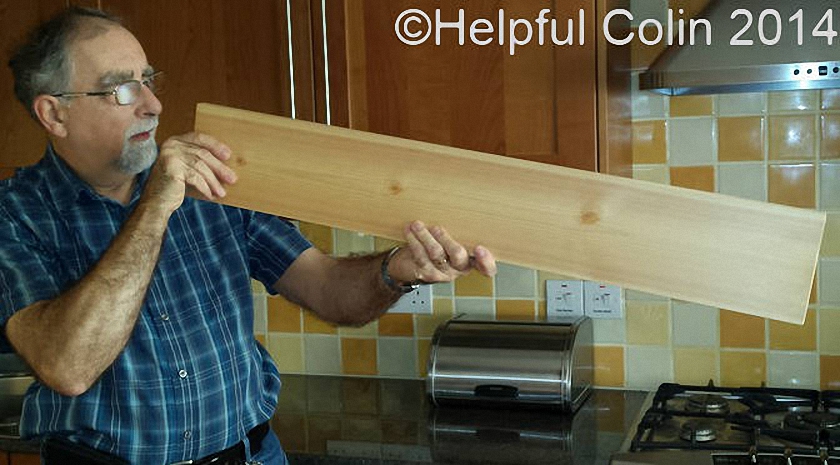Introduction
I would say sighting a straight line is a common practice used by builders and joiners to determine if a piece of timber is straight or bowed. It can be used to test any length of timber, but long pieces in particular. The practice requires no tools, just eyesight with a good depth of field enabling focusing along the whole length of timber to be checked.
Sighting A Straight Line Along The Edge Of Timber

Just hold the timber with one corner near to an open eye, while keeping the other closed, and look down the long edge of the timber to see if it looks straight or bowed.
SAFETY NOTICE: Wear Safety Glasses to protect your eyes.
Below are six images that you might see when sighting a straight line along the edge of timber depending on whether the timber is straight, bowed or twisted:

Notice how Straight Timber looks, especially the second image from the left. If you were in the wood yard selecting straight timber for a project, or you were planing timber to make it straight and true, this is what you would be looking for.
CAUTIONARY NOTE:
Remember a long piece of timber will be bowed down towards the ground at the far end, when sighting along it, due to gravity. Sighting should only be used to see if timber is bowed to the left or the right when holding a long piece up to look along it. To check the top and bottom are straight rotate the timber 90º so that the top and bottom become the left and right faces. Then they won’t be affected by the pull of gravity.
Sighting A Straight Line On Other Things
This ‘sighting a straight line’ technique can be used with all sorts of other materials besides a strip of wood. You can check the state of doors or furniture like sideboards and tables.
Outdoors you can check walls, fences, concrete edgings, paths, lawn edges, etc..
Using A Mirror To Aid Sighting A Straight Line
To check the laying of a path or anything at ground level look at it using a mirror resting on the ground and angled up towards your eye. In the mirror’s image:
- the brown area is the local soil,
- the green area represents foliage from the end of the line of edgings to the horizon,
- the blue area represents the sky.

Similarly use a mirror for anything else that is too high or otherwise out of sight.


Leave a Reply